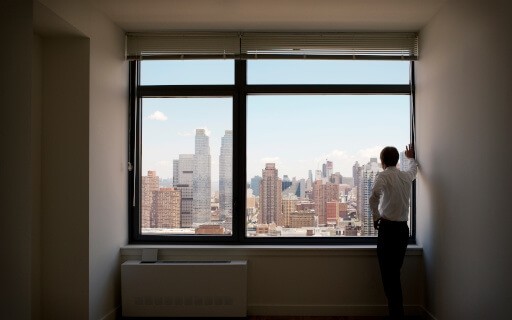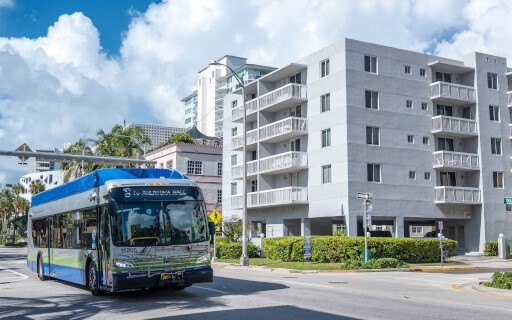Leasing properties to tenants requires a lot of paperwork for a landlord. You can simplify the process quickly by keeping only the most important rental forms on file in your office, so you can gain access to them any time. Don’t lose any one of these important documents again.
Move-In/Move-Out Checklist
These are the exact same document. Keeping a stack of move-in/move-out checklists allows you to note the unit’s condition before moving out a current tenant and moving in a new one. When a resident decides not to renew their lease, a move-out inspection is necessary to document any damages or wear-and-tear of the home. A new checklist is needed for a new tenant - you will report the unit’s pre-existing condition here.
New tenants will gain peace of mind from a move-in checklist. Make sure that when completing the checklist with your tenant, you both sign the document to acknowledge and confirm the unit’s current state.
Rental Applications
Those who want to rent from you need to fill out a rental application first. If more than one person will be living in the home, or your prospect has a co-signer/guarantor, those individuals will also need to fill out their own application. Once these documents have been received, you should then begin the background and credit check process. Doing this will lower your risk of leasing to a tenant with a less-than-stellar rental history.
Tenant Emergency Contacts
There are two main reasons you, as a landlord, might need to reach out to a tenant’s emergency contact:
- It’s an Emergency. If a tenant sustained an injury on your property, you would need to know who to call.
- Unauthorized Move Out. If the tenant moved out without your knowledge and owes back rent, you have a better chance of locating their whereabouts.
It’s smart to have an emergency contact list on file in case you need to get ahold of them. Collect at least three names, a phone number, and an email for each person and compile the names into an address book.
Lease Agreements
Whether you’re moving forward with one tenant or five at a time, you should always have lease agreements on hand. The leases should list all tenants moving into the unit, and each person should sign the agreement and retain a copy (this includes the co-signer/guarantor).
The lease agreement should state the amount of rent per month, when it’s due, accepted payment options, if you charge late fees, and how much they are. The tenant’s lease term is important to include, as is the amount of the security deposit and if renter’s insurance is required.
Property inspections and access to the tenant’s unit should be disclosed within the agreement. If you plan on selling the property at some point, a clause stating the process for showings should be included. Whatever’s relevant to your property, make sure it’s defined clearly in your lease agreement.
With Apartments.com you can easily create a lease that fits your property and your standards. Our fully customizable lease agreements are state-specific and legally binding, meaning you can create a lease no matter where your property is located, and it will adhere to all state laws and local ordinances. Once your lease is created, your tenants can quickly sign online. No more hand-delivering paper leases and then trying to find a place to store them! Apartments.com keeps all your leases neatly organized and accessible so you can reference them whenever you like.
Addendum
Do you have to modify a section of the lease agreement? Pen the changes on a designated rental addendum form and include the date the changes were made, when they go into effect, and have all tenants sign it. Photo copy the addendum for your renters, and file away the original with the lease agreement.
Property Mortgage & Improvements
This one is for your own sanity. Keep all property information in a safe, easy-to-access place. These documents include your loan information, mortgage, refinancing plans, and even invoices/receipts for remodeling or improvements to the property.
Utility Providers
It doesn’t matter who’s responsible for the set up – all landlords should keep a list of utilities on file for each property. The list should include the provider’s name, a contact person, and phone number for easy set up.
Lease Renewal Letter Template
Generally a lease renewal letter is sent 60 days before a tenant’s lease ends. The purpose is to determine whether a new lease needs to be drawn up, or if you should begin marketing the property to find a new renter. Address the letter to the tenant and include the following:
- Lease expiration date
- New lease term offers
- Increase or decrease in rent
- New rent price
- Tenant answer date
Keep the lease renewal template in your file so you can easily add in the information [whenever you have to send one out].
Move-Out Letter
Is a tenant moving out? You’ll need to send a move-out letter to the resident containing step-by-step instructions about what to do on moving day. Drop it off at their front door about three weeks beforehand, and make sure the letter addresses what’s expected of them.
You may want to remind them of the repercussions of violating the lease, such as fines or costs deducted from their deposit if they abandon furniture on the property or leave the apartment dirty. Make a request for them to lock the door when they’re finished, and to provide you a forwarding address to mail the balance of the security deposit.
While you may have a lot going on as a landlord, you can simplify some aspects by keeping these important rental documents accessible. Documenting your transactions is a safety precaution to protect from liability, plus you’ll be more organized too.











